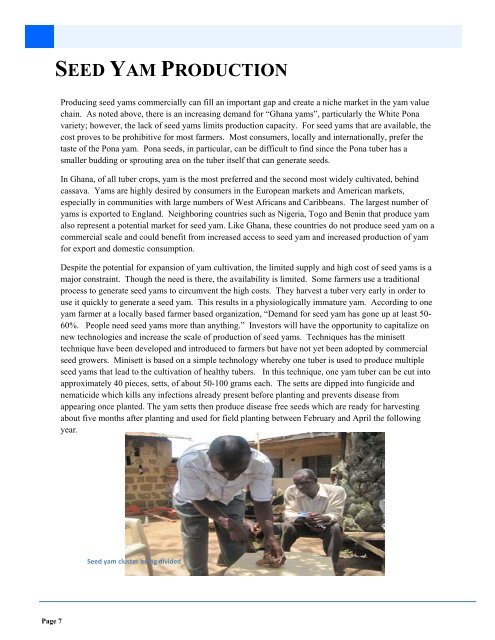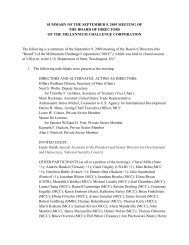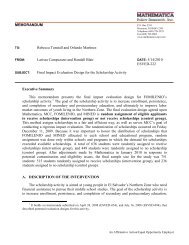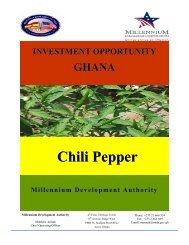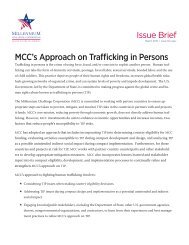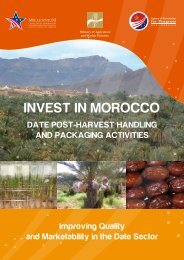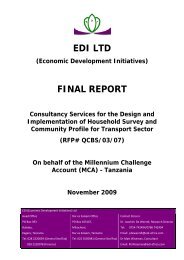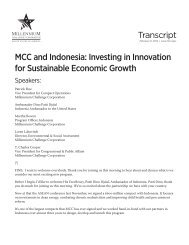Yam Seed Production - Millennium Challenge Corporation
Yam Seed Production - Millennium Challenge Corporation
Yam Seed Production - Millennium Challenge Corporation
You also want an ePaper? Increase the reach of your titles
YUMPU automatically turns print PDFs into web optimized ePapers that Google loves.
Page 7<br />
SEED YAM PRODUCTION<br />
Producing seed yams commercially can fill an important gap and create a niche market in the yam value<br />
chain. As noted above, there is an increasing demand for “Ghana yams”, particularly the White Pona<br />
variety; however, the lack of seed yams limits production capacity. For seed yams that are available, the<br />
cost proves to be prohibitive for most farmers. Most consumers, locally and internationally, prefer the<br />
taste of the Pona yam. Pona seeds, in particular, can be difficult to find since the Pona tuber has a<br />
smaller budding or sprouting area on the tuber itself that can generate seeds.<br />
In Ghana, of all tuber crops, yam is the most preferred and the second most widely cultivated, behind<br />
cassava. <strong>Yam</strong>s are highly desired by consumers in the European markets and American markets,<br />
especially in communities with large numbers of West Africans and Caribbeans. The largest number of<br />
yams is exported to England. Neighboring countries such as Nigeria, Togo and Benin that produce yam<br />
also represent a potential market for seed yam. Like Ghana, these countries do not produce seed yam on a<br />
commercial scale and could benefit from increased access to seed yam and increased production of yam<br />
for export and domestic consumption.<br />
Despite the potential for expansion of yam cultivation, the limited supply and high cost of seed yams is a<br />
major constraint. Though the need is there, the availability is limited. Some farmers use a traditional<br />
process to generate seed yams to circumvent the high costs. They harvest a tuber very early in order to<br />
use it quickly to generate a seed yam. This results in a physiologically immature yam. According to one<br />
yam farmer at a locally based farmer based organization, “Demand for seed yam has gone up at least 50-<br />
60%. People need seed yams more than anything.” Investors will have the opportunity to capitalize on<br />
new technologies and increase the scale of production of seed yams. Techniques has the minisett<br />
technique have been developed and introduced to farmers but have not yet been adopted by commercial<br />
seed growers. Minisett is based on a simple technology whereby one tuber is used to produce multiple<br />
seed yams that lead to the cultivation of healthy tubers. In this technique, one yam tuber can be cut into<br />
approximately 40 pieces, setts, of about 50-100 grams each. The setts are dipped into fungicide and<br />
nematicide which kills any infections already present before planting and prevents disease from<br />
appearing once planted. The yam setts then produce disease free seeds which are ready for harvesting<br />
about five months after planting and used for field planting between February and April the following<br />
year.<br />
<strong>Seed</strong> yam cluster being divided


